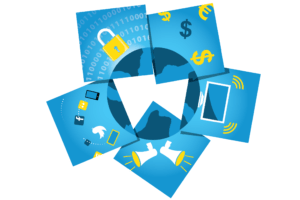Understand how well positioned your organisation is to compete for funding, media coverage, public attention, staff and supporters by analysing your competitive advantages.
How do you compare to other organisations in your field? What are your relative strengths and weaknesses? How well positioned are you to compete with others for funding, media coverage, public attention—even attracting the best staff or board members?
What distinguishes your organisation from others that have similar aims or activities? Your organisation’s unique reason for existing— the specific goals it is trying to achieve, the work that it does, the skills and resources it deploys to achieve them—forms the basis of your competitive advantage. What specific value do you add to your sector or field? Why should donors and funders provide you with resources, rather than funding others in the field?
David La Piana in The Nonprofit Strategy Revolution: Real-Time Strategic Planning in a Rapid-Response World writes:
Nonprofit competitive advantage is a nonprofit’s ability to sustainably produce social value using a unique asset, outstanding execution, or both.
Some organizations gain advantage through a unique asset, such as a particular location, a solely owned process or technology, a massive and unbeatable “head start,” or even a specific, sought-after individual. But even without such assets, organizations can gain competitive advantage through better execution of programs and management functions than others in their market. (p. 54)
A competitive advantage is your organisation’s ability to make a difference by using a unique asset or outstanding execution in a way that maximizes the benefit of that asset. So, for instance, your organisation may have a competitive advantage in advocating for online free expression because you have a large email mailing list of people interested in this topic (an asset) and a team that is strong at developing and executing unique online campaigns that motivate people to take action (outstanding execution which maximizes the strength of your email mailing list).
Competitive advantages often fall into one of two categories. Asset advantages are based in specific attributes of the organisation, program, or staff. They can be loosely categorized as “whats” and can include things such as:
• Linguistic or cultural capacity
• Location of your organisation
• Web presence
• Funding
• Name recognition
• Reputation
• Partnerships
• Well-connected board
• Strong staff
Asset advantages are valuable but can shift relatively quickly if another organisation is able to gain access to those assets. Execution advantages tend to be more stable in the long run because they are “hows”—processes, ways of doing things—that take more knowledge and expertise to develop and maintain. They include things such as:
• Efficient delivery of services
• Marketing and communication expertise that makes messages and campaigns memorable and effective
• Strong accountability and reporting processes that create trust with funders and supporters
• Knowledge and expertise on key issues that position your organisation as thought leaders
• Overall effectiveness in achieving your goals
Think of it this way: if you were investing in the stock market, an asset advantage would be having lots of money to start out with. An execution advantage would be having the knowledge to make good choices and the processes in place to purchase stocks efficiently and with low transaction charges.
It is important to note that in the NGO world, our competitors may also be our allies: we may sometimes compete with each other for media attention or funding, and at other times, cooperate with each other on joint efforts and actions. In analysing our competitive strengths, we are not casting other organisations in a negative light, or suggesting that they are our opposition. We are simply assessing ourselves in relation to them. A competitive analysis is as much—and sometimes more—about assessing our own strengths and weaknesses as it is about assessing those of others.

TIP
* Use the IFEX Strategic Planning Tool: Competitive Strength Map to help you capture how you compare to your key competitors. It can be tempting to focus on the same competitors from year to year. Step back and ask yourself:
• Which new or smaller competitors are doing interesting work in our sector? What can we learn from them?
• If we were going to merge with another group to strengthen ourselves, which group would it be? What are they doing that we could be doing?
• Which competitor irritates us the most? Why? What can we learn from them?
* Refer to the IFEX Organisational Strength Map to explore more deeply your organisation’s strengths and areas of potential growth and development.
Strategic Planning Toolkit
Build your strategic plan and improve your organisation’s effectiveness with these strategic planning tools and fact sheets. Not sure where to start? Check out the Starting Points page for advice tailored to your situation.
Chapters
- Starting Points
- What Are the Components of a Strategic Plan?
- What Are Vision, Mission, Values and Theory of Change?
- What are SMART Goals, Objectives and Targets?
- What is an Annual Plan or Workplan?
- What is an Environmental Scan?
- What is Your Organisation’s Competitive Advantage?
- How Do We Keep Our Strategy and Strategic Plan Current?
- How Do We Measure Change?
- Working With a Consultant
- IFEX Strategic Planning Tools

Organisational Strength Map
Use this tool to identify your organisation’s strengths and explore areas for growth and development.

Communications Strategy Toolkit
Effective communications planning will enable you to raise your organisation’s voice on issues that matter.

Financial Sustainability Plan
Ensure that your organisation survives and thrives by strengthening its fiscal framework.

Social Media Strategy
This step-by-step tool will enable you to build an effective social media strategy and engage your online audiences.

Website Optimisation Plan
This 10-step plan will help you improve your website’s impact and usability.